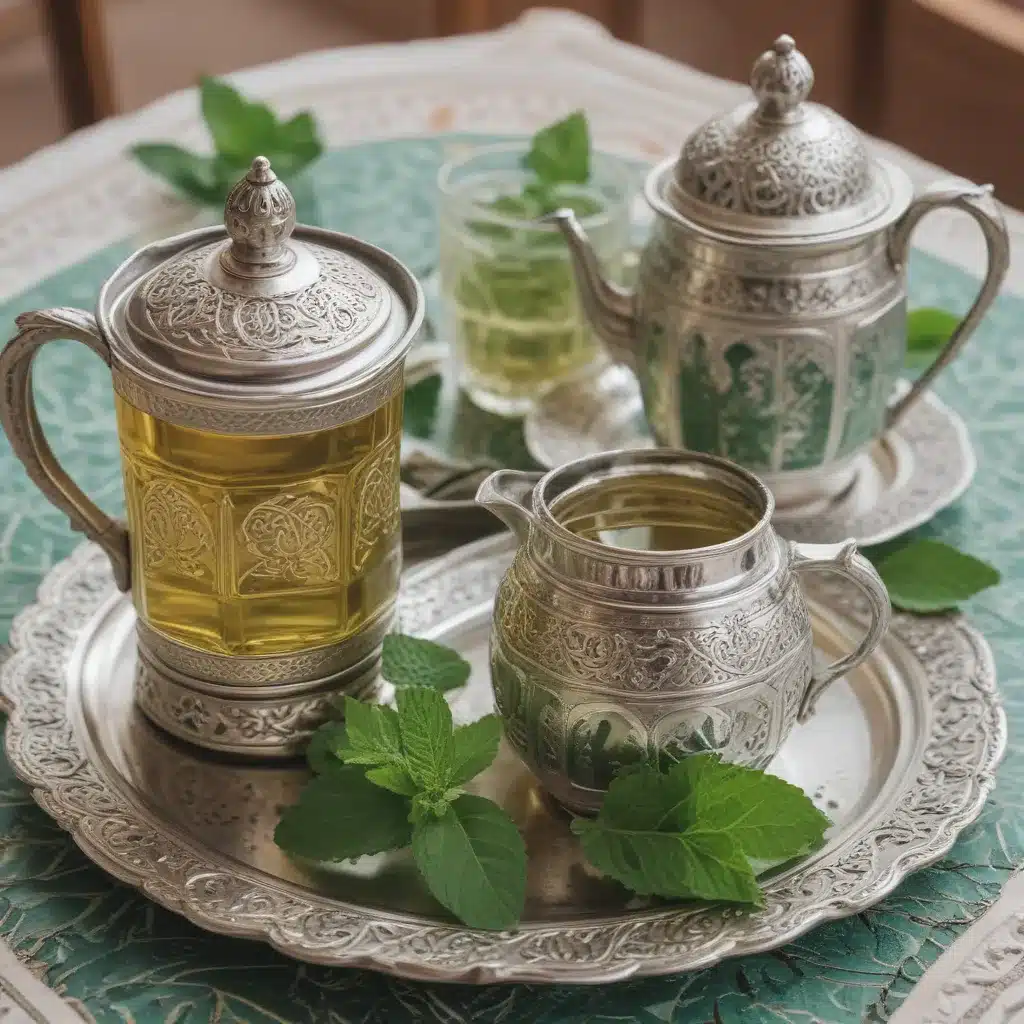
Discovering the Joy of Moroccan Treats
As the sun sets on a bustling New York City, I find myself drawn to the warm, inviting glow of El Bahia, a Moroccan restaurant tucked away in the heart of the West Village. The alluring scent of spices and the soothing melody of traditional Moroccan music beckon me to step inside and immerse myself in a world of rich cultural traditions.
Tonight, I’m here to explore a beloved Moroccan ritual that has captivated my imagination – the art of the Moroccan tea time. Sfenj, the fluffy, golden-fried donuts, and refreshing mint tea, the quintessential beverage, are the stars of this delightful experience. Little did I know that these humble delicacies hold a deep significance in Moroccan culture, weaving a tapestry of history, community, and culinary heritage.
El Bahia, with its vibrant decor and warm hospitality, sets the perfect stage for my journey into the world of Moroccan tea time. As I settle into a cozy corner, sipping on a fragrant cup of mint tea, I can’t help but feel a sense of anticipation for the delicious discoveries that lie ahead.
The Tradition of Mimouna and the Rise of Sfenj
My culinary exploration begins with an introduction to the Moroccan tradition of Mimouna, a celebration that marks the end of Passover. According to the Aish.com article, Mimouna is a time when Moroccan Jews and their Muslim neighbors come together to share in the joy of breaking the Passover fast.
One of the key elements of this celebration is the preparation of sfenj, the beloved Moroccan donuts. As the article explains, after the rigors of Passover, when the use of flour was strictly prohibited, the arrival of sfenj signifies a return to the delights of chametz, or leavened bread. It’s a symbolic gesture of embracing freedom and the renewed possibilities that lie ahead.
The tradition of Mimouna is not just about the food, but also about the spirit of community and friendship. As the article notes, Moroccan families would often visit each other’s homes, sharing in the bounty of the Mimouna feast and strengthening the bonds of their close-knit communities. The scent of freshly fried sfenj and the sound of traditional music would fill the air, creating a festive atmosphere that celebrated the enduring faith and resilience of the Moroccan Jewish people.
Mastering the Art of Sfenj
As I delve deeper into the world of Moroccan tea time, I can’t help but be captivated by the allure of sfenj. These fluffy, golden-brown donuts are more than just a pastry – they are a testament to the ingenuity and culinary prowess of Moroccan cooks.
According to the Reddit post, the key to the perfect sfenj lies in its dough. Unlike the sweet, sugary donuts we’re more familiar with, sfenj is an unsweetened delight, relying on its airy, chewy texture and crisp exterior to captivate the palate. The dough is shaped into rings and fried in oil, resulting in a delightful contrast of textures that perfectly complements the sipping of mint tea.
As I observe the skilled chefs at El Bahia effortlessly crafting these delectable treats, I’m struck by the attention to detail and the reverence they display for this time-honored tradition. Each sfenj is a work of art, shaped with care and fried to golden perfection, ready to be enjoyed alongside the fragrant mint tea that is the hallmark of Moroccan tea time.
The Art of Mint Tea: A Sensory Delight
While the sfenj may be the star of the Moroccan tea time experience, the mint tea that accompanies it is no less captivating. As I raise the delicate, gold-rimmed glass to my lips, I’m immediately transported to the bustling souks of Marrakech, where the scent of freshly brewed mint tea mingles with the lively chatter of the vendors.
The ritual of preparing mint tea is a true art form in Moroccan culture. The tea leaves are carefully selected and meticulously brewed, often with the addition of fragrant spices like cinnamon and cardamom. The resulting liquid is then poured from a height, creating a mesmerizing display of foaming bubbles that add to the overall sensory experience.
As I sip the refreshing, slightly sweetened tea, I can’t help but appreciate the skill and attention to detail that goes into its preparation. The tea’s vibrant green hue and the delicate balance of flavors are a testament to the deep-rooted traditions that have been passed down through generations of Moroccan families.
Embracing the Spirit of Moroccan Tea Time
As the evening progresses, I find myself immersed in the warm and inviting atmosphere of El Bahia. The soft glow of the lanterns, the gentle sounds of traditional music, and the laughter of the other diners all contribute to a sense of community and shared experiences.
I take a bite of the perfectly crisp sfenj, the sweet honey drizzle adding a delightful contrast to the savory dough. As the flavors dance on my tongue, I can’t help but marvel at the centuries-old traditions that have given rise to this delectable treat. And with each sip of the refreshing mint tea, I feel a deeper connection to the rich cultural heritage of Morocco, a tapestry of flavors and stories that have stood the test of time.
In this moment, I understand why the Moroccan tea time ritual is so deeply revered. It’s not just about the food and drink, but about the opportunity to slow down, savor the moment, and connect with the vibrant community that surrounds me. As I prepare to leave, I make a mental note to return to El Bahia, eager to continue my exploration of this captivating culinary and cultural tradition.


